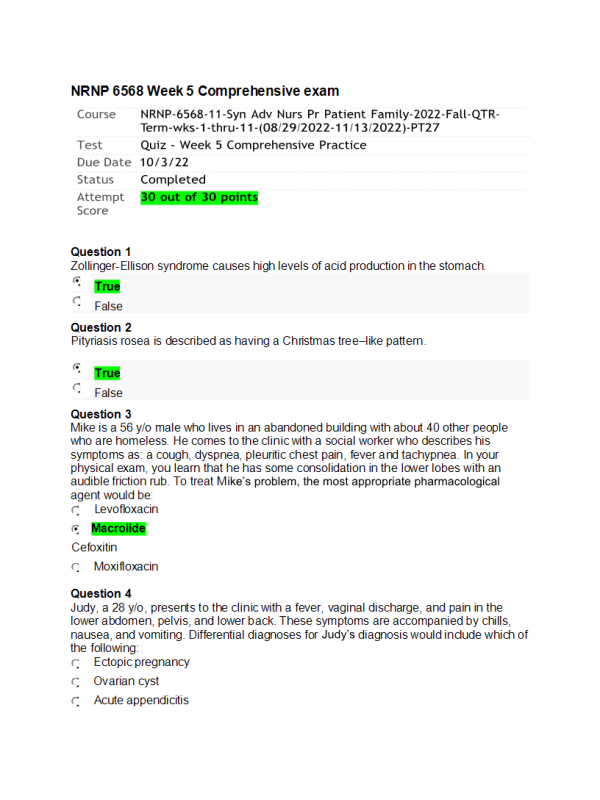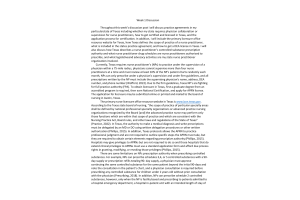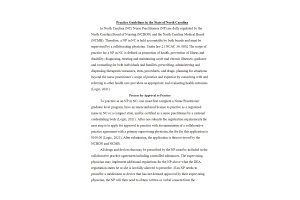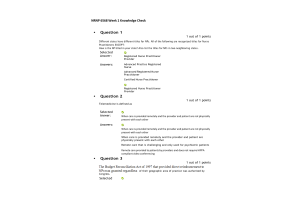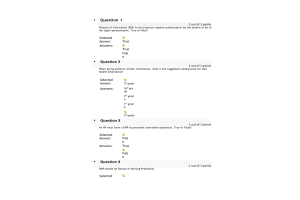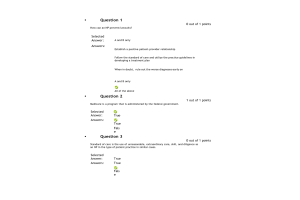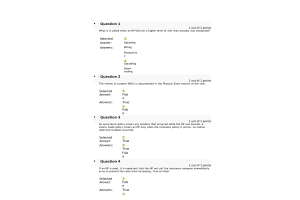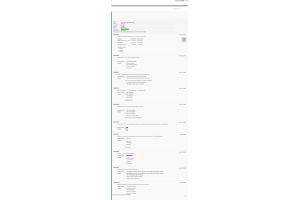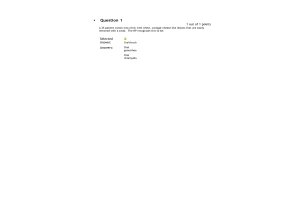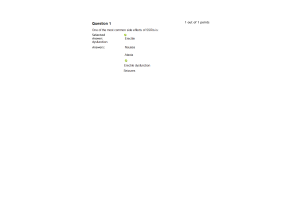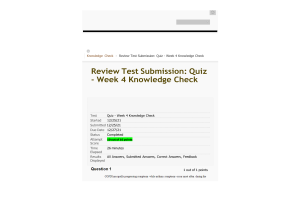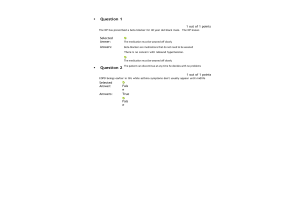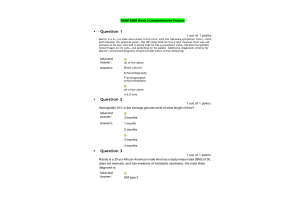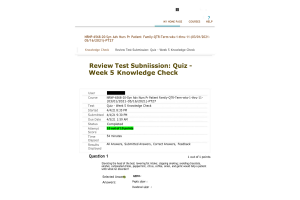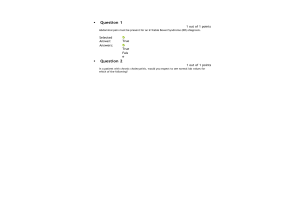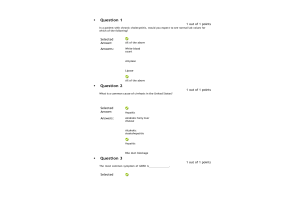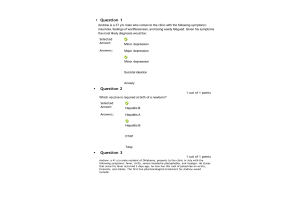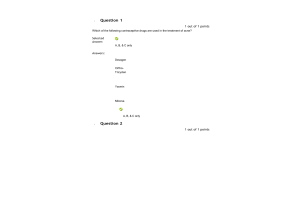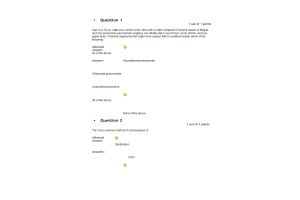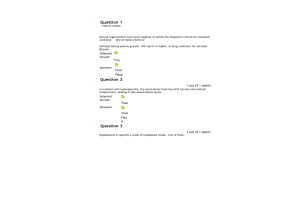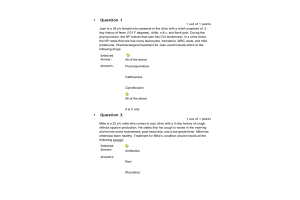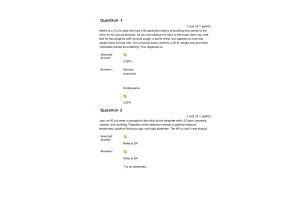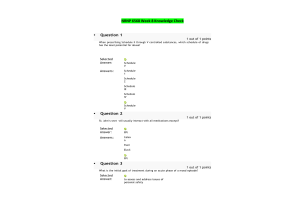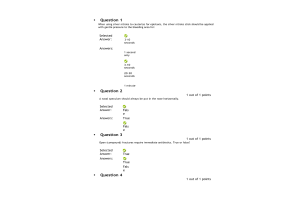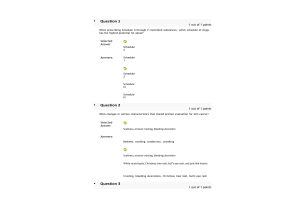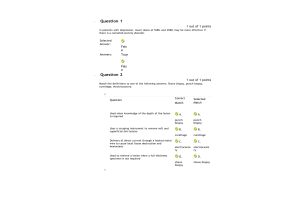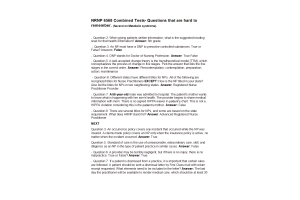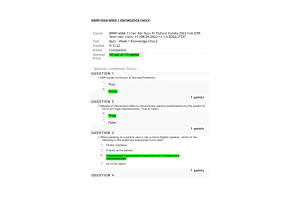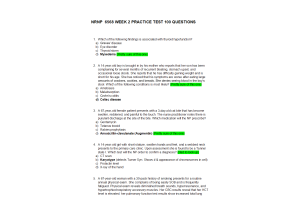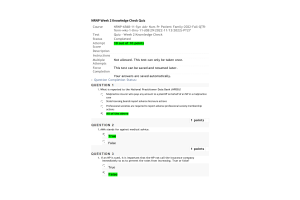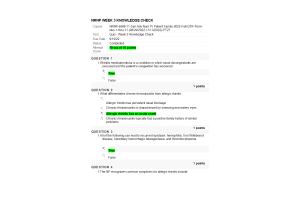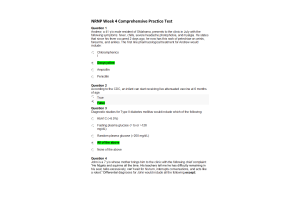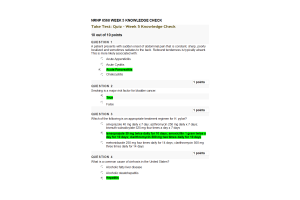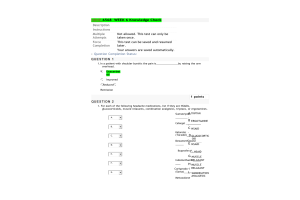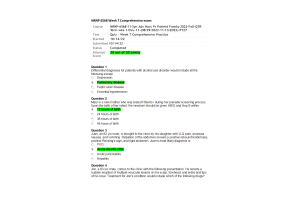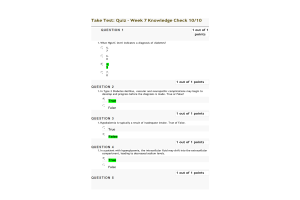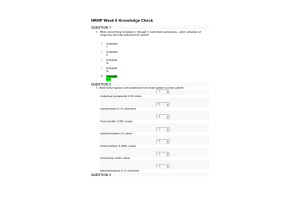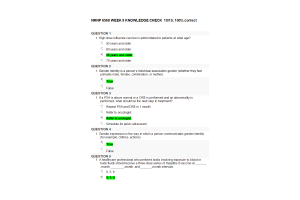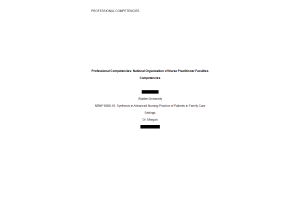NRNP 6568-11 Week 5 Quiz - Comprehensive Practice (30 out of 30 points)
- $35.00
- Question: Zollinger-Ellison syndrome causes high levels of acid production in the stomach.
- Question: Pityriasis rosea is described as having a Christmas tree–like pattern.
- Question: Mike is a 56 y/o male who lives in an abandoned building with about 40 other people who are homeless. He comes to the clinic with a social worker who describes his symptoms as: a cough, dyspnea, pleuritic chest pain, fever and tachypnea. In your physical exam, you learn that he has some consolidation in the lower lobes with an audible friction rub. To treat Mike’s problem, the most appropriate pharmacological agent would be:
- Question: Judy, a 28 y/o, presents to the clinic with a fever, vaginal discharge, and pain in the lower abdomen, pelvis, and lower back. These symptoms are accompanied by chills, nausea, and vomiting. Differential diagnoses for Judy’s diagnosis would include which of the following:
- Question: Hemoglobin A1C is the average glucose level of what length of time?
- Question: Metabolic syndrome is characterized by all the following traits except
- Question: Which of the following vaccines are contraindicated in pregnancy?
- Question: Deep palpation of the left lower quadrant of the abdomen causes referred pain to the RLQ. This is a positive for:
- Question: Bonnie is a 76 y/o female patient who resides in a nursing home. She is currently on a 10-day course of Clindamycin for a recurrent bacterial vaginal infection. She has started having 10–15 watery stools per day. The best way to treat Bonnie’s diarrhea is:
- Question: All the following are antihypertensive drugs that can be used in pregnant women except:
- Question: Ann is a primigravida in her 35th week of pregnancy and presents to the clinic with severe recurrent headaches, blurred vision, pitting edema, and right upper quadrant pain. Additionally, she has oliguria, nausea, and vomiting. Her urine protein is >1+. The only treatment for Ann would be:
- Question: Mike is a 22 y/o male who comes to your clinic with a 5-day history of cough without sputum production. He states that his cough is worse in the morning and he has some hoarseness, post-nasal drip, and a low-grade fever. Mike has otherwise been healthy. Based on these symptoms Mike’s likely diagnosis is:
- Question: Martin is a 41 y/o male who comes to the clinic with the following symptoms: fever, chills, and malaise. On physical exam, the NP notes that he has a new murmur that was not present at his last visit and is aware that he has a prosthetic valve. He also has splinter hemorrhages on his nails, and petechiae on his palate. Additional diagnostic criteria for Martin’s presumed diagnosis would include which of the following:
- Question: Joan is a 39 y/o female who presents to the clinic with a chief complaint of: 3-day history of fever (101 F degrees), chills, n & v, and flank pain. During the physical exam, the NP notices that Joan has CVA tenderness. In a urine check, the NP notes that she has many leukocytes, hematuria, WBC casts, and mild proteinuria. The most likely diagnosis is:
- Question: Mike is a 56 y/o male who lives in an abandoned building with about 40 other people who are homeless. He comes to the clinic with a social worker who describes his symptoms as: a cough, dyspnea, pleuritic chest pain, fever, and tachypnea. In your physical exam, you learn that he has some consolidation in the lower lobes with an audible friction rub. The most likely diagnosis for this man would be:
- Question: Once cervical cancer screening is initiated in women; the screening interval should be:
- Question: Mike is a 22 y/o male who comes to your clinic with a 5-day history of cough without sputum production. He states that his cough is worse in the morning and he has some hoarseness, post-nasal drip, and a low-grade fever. Mike has otherwise been healthy. Treatment for Mike’s condition would include all the following except:
- Question: Jon, a 63 y/o male, comes to the clinic with the following presentation. He reports a sudden eruption of multiple vesicular lesions on his scalp, forehead, and sides and tips of his nose. After performing a physical exam, the NP diagnoses his condition as:
- Question: Diabetes mellitus causes both microvascular and macrovascular damage. All of the following are indications of microvascular damage except:
- Question: Diagnostic studies for Type II diabetes mellitus would include which of the following?
- Question: According to the U.S. Preventive Task Force, screening for cervical cancer should not begin in women before the age of:
- Question: Randy is a 29 y/o African American male who has a body mass index (BMI) of 30, does not exercise, and has evidence of metabolic syndrome. His most likely diagnosis is:
- Question: Vulvovaginitis in the vulva and vagina can be caused by which of the following organisms?
- Question: Joan is a 39 y/o female who presents to the clinic with a chief complaint of: 3-day history of fever (101 F degrees), chills, n & v, and flank pain. During the physical exam, the NP notices that Joan has CVA tenderness. In a urine check, the NP notes that she has many leukocytes, hematuria, WBC casts, and mild proteinuria. Complications for Joan would include all the following except:
- Question: Mike is a 22 y/o male who comes to your clinic with a 5-day history of cough without sputum production. He states that his cough is worse in the morning, and he has some hoarseness, post-nasal drip, and a low-grade fever. Mike has otherwise been healthy. Differentials for Mike might include which of the following?
- Question: Which of the following glands is responsible for calcium balance in the body?
- Question: Artie, a 36 y/o male, comes to the clinic with chief complaint of: intermittent flank one side flank pain. The pain is an 8 on a scale of 1–10, with 10 being the worst pain he has ever felt. He states the pain lasts from 20–60 minutes and that he must either stand or walk when the pain hits. He also notes that he has blood in his urine. His most likely diagnosis is:
- Question: Judy, a 28 y/o, presents to the clinic with a fever, vaginal discharge, and pain in the lower abdomen, pelvis, and lower back. These symptoms are accompanied by chills, nausea, and vomiting. This presentation is most typical of:
- Question: The definition of a UTI is >100,000 CFU/mL of one organism.
- Question: Martin is a 41 y/o male who comes to the clinic with the following symptoms: fever, chills, and malaise. On physical exam, the NP notes that he has a new murmur that was not present at his last visit and is aware that he has a prosthetic valve. He also has splinter hemorrhages on his nails, and petechiae on his palate. Based on these finding alone the NP arrives at the following presumed diagnosis:
